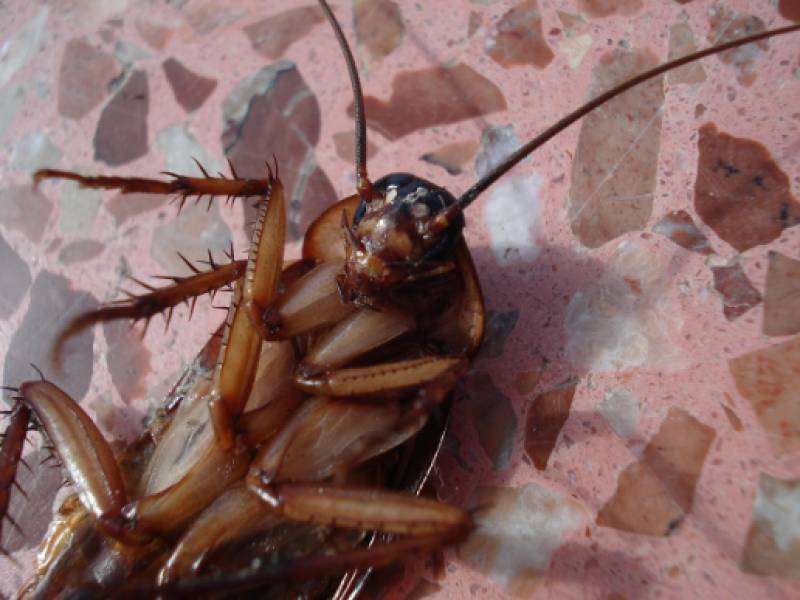
To be listed on the CAMPOSOL TODAY MAP please call +34 968 018 268.
article_detail
Date Published: 31/10/2025
How to keep cockroaches out of your home this autumn
When the temperatures begin falling in Spain, cockroaches head to the cosy indoors

As the temperatures start to drop, sightings of the dreaded cockroach begin to dwindle, especially in the cooler outdoors. But don’t be fooled. When it gets chilly, these creepy crawlies like nothing better than to snuggle down for the winter inside your cosy home, nesting behind cupboards, under sinks and floors and even in wall cavities.
During the autumn months, cockroaches move indoors where they find the perfect conditions to survive. Warmth, humidity and food all make your home a welcome refuge. Kitchens, bathrooms, underbuilds and even appliance motors are their favourite hiding spots.
With colder and wetter weather outside, they tend to stay in enclosed areas where they can remain safe and active.
There are a few clear signs that these pests have taken up residence. You may notice droppings, shed skins or a strong, unpleasant odour. Cockroaches also reproduce faster at this time of year if they have easy access to food scraps or accumulated rubbish, which can quickly make the problem worse.
Beyond making our skin crawl at the very sight of them, cockroaches pose a very real health risk. They are known to carry bacteria such as Salmonella and E. coli, contaminate food and utensils and worsen allergies or respiratory problems.
Keeping them out of your home is therefore also a measure to protect your health.
Preventing cockroaches from settling in
Stopping an infestation before it starts is the best approach. Daily cleaning is essential. Wipe down tables and counter tops, sweep up crumbs and grease, and take out the rubbish every day.
Check for cracks and gaps in walls, floors and around doors and windows and seal them, as cockroaches love to squeeze through small openings.
Drains and pipes should be covered or plugged when not in use to block their entry.
Because cockroaches are drawn to warmth and moisture, ventilate bathrooms and other damp areas well. Keep an eye on hidden spots like fridge motors, dishwashers and water heaters, where they often shelter.
Natural ways to get rid of cockroaches
If you have already spotted cockroaches, there are a few simple natural methods you can try. Pine cones can help as the acids and aroma in their wood contain compounds that cockroaches dislike. Placing pine cones in affected areas may encourage them to leave.
Bay leaves are another effective trick. Crush dried bay leaves into a powder, mix with boric acid and hot water, and spray it in areas where cockroaches hide. The scent works as a natural repellent and can help reduce their numbers safely.
And remember – never, ever step on or squish a cockroach underfoot. Your natural reaction might be to stomp the life out of one when you spot it, but the World Health Organisation has warned that this is the worst possible plan of attack. Squashing cockroaches can actually spread bacteria that are dangerous to human health.
Cockroaches are some of the hardiest insects on the planet. Some species can survive for a month without food, while others can go without air for 45 minutes. Even though a hard stomp will certainly kill them, it can also release harmful bacteria into your home.
These bacteria can be inhaled and cause allergies or make asthma worse. Cockroaches are officially classed as unhygienic scavengers and can carry staphylococci, streptococci, salmonella and other harmful germs that can lead to diarrhoea, cholera or typhoid fever.
Image: Pixabay
Loading
See more news about animals in Spain:
OR
Sign up for the Spanish News Today Editors Roundup Weekly Bulletin to get a comprehensive email with all the week’s news for Spain, Murcia, Alicante and Andalucía.
Get a sneak peek – here are a few of our recent Subscription Bulletins:
Discount Special Offer subscription:
36.95€ for 48 Editor’s Weekly News Roundup bulletins!
Please CLICK THE BUTTON to subscribe.
Contact Murcia Today: Editorial 000 000 000 /
Office 000 000 000


























